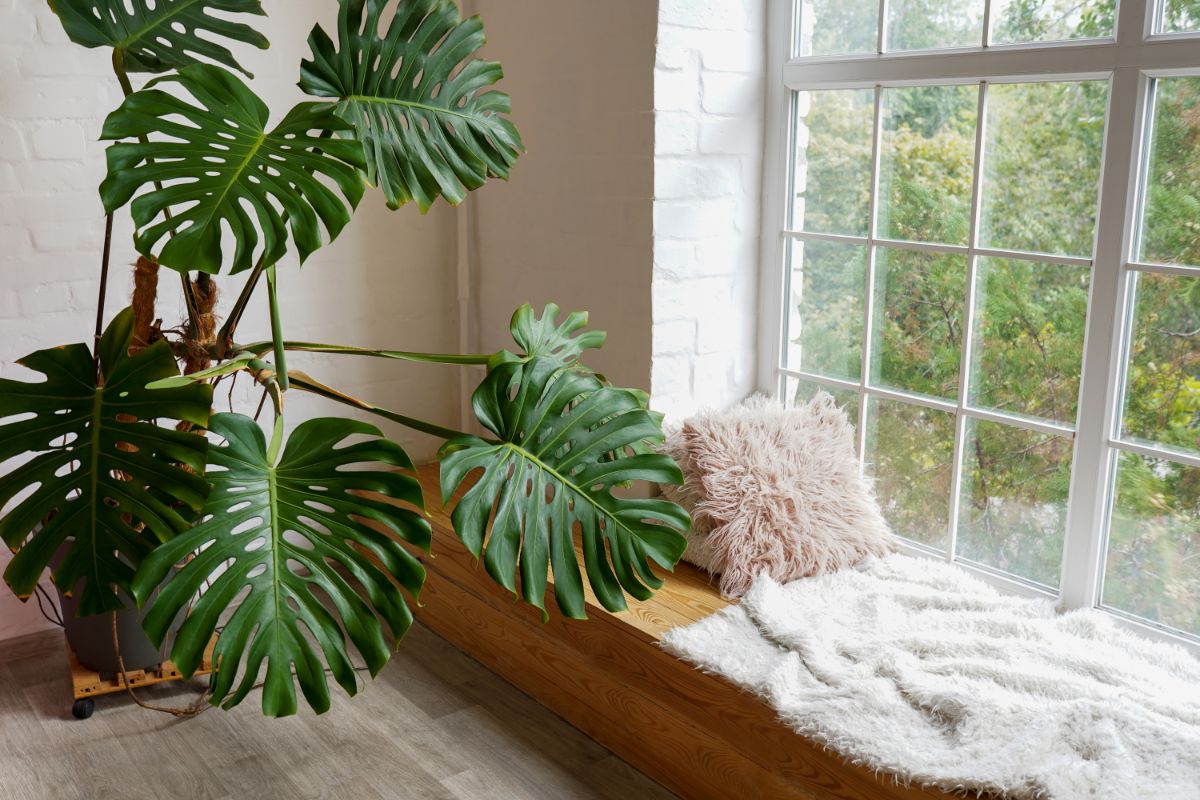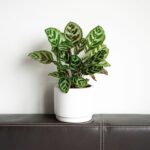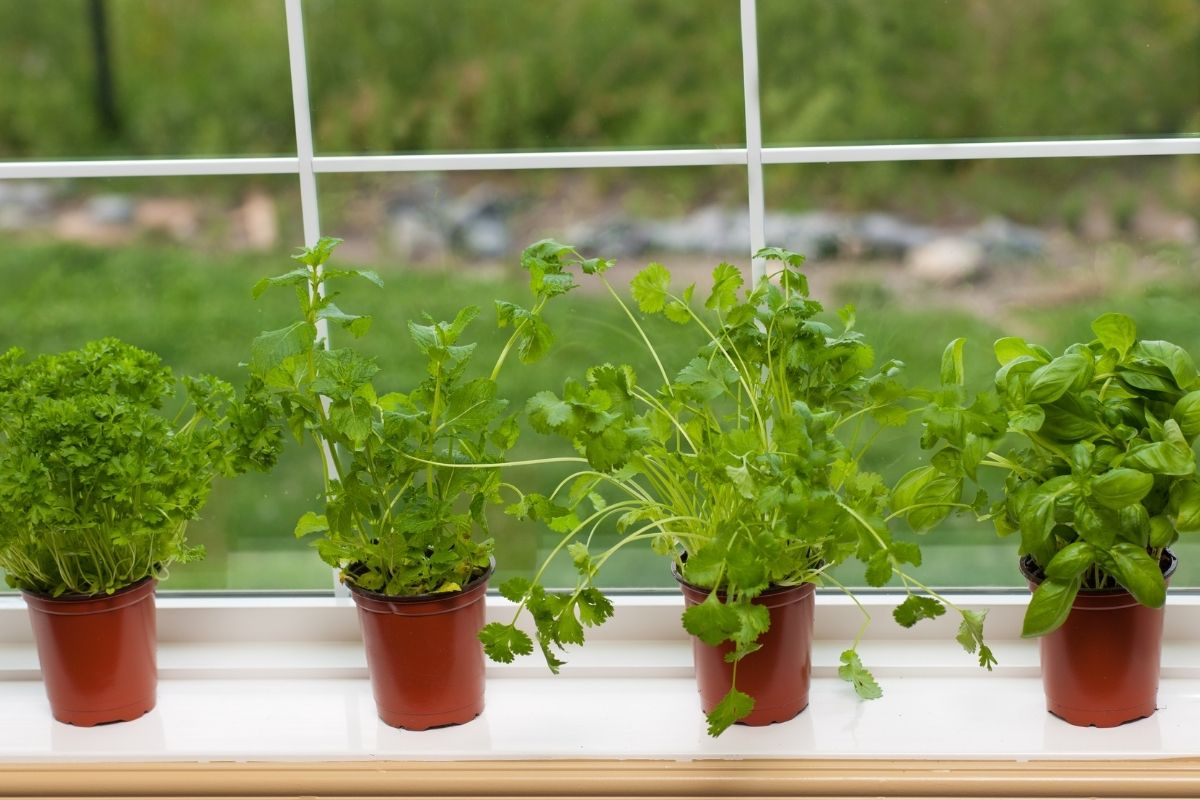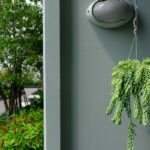Plants all have different light requirements depending on the one you go for. Some may like shady conditions, while others will wither if they don’t receive enough sunlight.

Various spaces within the home receive different amounts of sunlight. Positioning your plant in the wrong space can affect the way it grows, leading to a small, shriveled, or scorched plant.
So, If you’re growing plants indoors, you need to be wary about the location you choose for your plant. If you plan on storing your plants around a west-facing window, you’ll need to choose plants with moderate light requirements.
You’ll discover some of these plants below. We’ll go over the best plants for west-facing windows in this post, as well as more information about plant light requirements.
Why Do Plants Need Light To Grow?
Light is one of the elements that affect a plant’s growth and development. Light quality, intensity, and duration also affect a plant’s well-being.
Plants need light to grow as light is part of a process called photosynthesis. This involves plants taking sunlight through their chloroplasts, then using the sunlight’s energy to turn carbon dioxide into oxygen.
Due to photosynthesis, sunlight has a direct impact on a plant’s development, reproduction, growing cycle, flowering, and overall well-being.
Plants that grow in different settings have evolved to thrive in varied light conditions. These range from high-sunlight locations, like deserts, to shady, partially lit forest areas.
West Facing Window Light Conditions
North-facing windows receive low amounts of sunlight, while south-facing windows receive a lot. West-facing windows, however, give plants a mix of indirect, bright sunlight, and direct, bright sunlight.
Indirect sunlight is light that is softer or filtered, while direct sunlight is light that directly comes into contact with a plant.
If a plant is placed inside three feet from a west-facing window, it will receive direct, bright sunlight during that afternoon.
If a plant is placed inside five feet away from, or in front of a west-facing window that has been veiled with a sheer curtain, it will receive indirect sunlight during the afternoon.
Afternoon light is usually stronger and hotter compared to morning light which travels through east-facing windows. This is why west-facing windows are best for plants that can handle stronger sunlight and temperatures.
Plants For West-Facing Windows
Now that you know more about plant light conditions, here are the best plants to position around west-facing windows.
1. Echinopsis
Also known as the Hedgehog Cactus, Echinopsis is a cactus that likes sunlight. These cactus plants can handle full sunlight and will grow well in these conditions, as long as they are watered sufficiently.
As they grow in the desert, cacti typically like sunlight. Some varieties can even handle a whole day’s worth of sunlight. If this is the case, it’s best to keep the cactus plant in a south-facing window.
Echinopsis, however, are different, as they prefer less sunlight overall. They’ll need around six to eight hours of sunlight each day, which is a west-facing window the ideal spot.
2. Cordyline Terminalis
Cordyline Terminalis, or the Ti plant, does well in indirect, bright sunlight. Direct sunlight can scorch this colorful plant’s leaves, but if it doesn’t receive enough sunlight, its vibrant petals can change to a dull green shade.
The Ti plant is available in different shades, like pink, red, and orange. They can grow in low light, but if this continues, poor light conditions can affect the plant’s health.
A Cordyline Terminalis does best in mainly indirect sunlight, with a little direct sunlight at times during the day. A west-facing window is great for this, but take care if your Ti plant is variegated, as it will need more light compared to non-variegated plants.
3. Dieffenbachia
The Dumb Cane, known as the Dieffenbachia plant, is an incredibly popular choice to keep in the modern home. It can even evolve to grow under office fluorescent lights, though this process may take a while.
As the Dumb Cane thrives best in medium-light conditions, a west-facing window that receives indirect, bright sunlight is a great option.
If you can, hang a sheer curtain up on your window. This will help filter the light so it isn’t too intense. Dieffenbachia needs indirect, bright sunlight as direct light can burn its foliage.
Before you settle on Dieffenbachia, bear in mind that this plant can be harmful to pets, particularly small ones that dash around the home. Keep this plant well away from dogs and cats, as it can be toxic to their delicate systems.
4. Saxifraga Stolonifera
Better known as the strawberry begonia, this leafy plant grows unique hairy leaves with red stems. The plant grows very quickly and if cared for with the right conditions, can produce little star-shaped flowers in summer.
The strawberry begonia does best in bright, but not direct sunlight. Both west and east-facing windows are good choices here, as they allow your plant to receive enough sunlight without burning its fragile leaves.
You’ll need to repot this plant every few years or if its roots fill up your pot. Keep the soil lightly moist, but don’t water too much. A strawberry begonia plant has little hairs that can soak up water, so if it is overwatered, its leaves can begin to rot.
5. String Of Pearls
This uniquely named plant is a succulent that originates from Southwest Africa. The plant grows tendrils with spherical, small beads that resemble pearls, which explains the plant’s name.
The String of Pearls plants need between six and eight hours of sunlight every day. A west-facing window can be great for this in winter.
However, as it can become too hot during summer, you should move the plant to an east-facing window that receives weaker morning sunlight.
Ideally, keep the String of Pearls plant in direct sunlight during gentle morning conditions, then move it to a partially shaded or indirect sunlight location when the stronger afternoon sunlight hits.
6. Dracaena Fragrans
Better known as the Corn Plant, the Dracaena Fragrans is a lenient houseplant that’s relatively easy to grow.
It’s a good choice for beginners as regarding watering and temperature conditions, the plant is very low-maintenance. If you slip up along the way and make a little mistake, the Corn Plant will usually survive.
This plant can grow in a large range of light conditions, but if you want it to thrive, keep it in a west-facing window. The Dracaena Fragrans does best when it receives half a day’s worth of full sunlight.
Both west and east-facing windows can provide these conditions. The difference is that a west-facing window delivers full sunlight during the afternoon, while east-facing windows deliver full sunlight in the morning.
7. Croton Plants
These bold plants are popular houseplant choices, thanks to their complex, multicolored leaves with shades of purple, orange, and green.
Croton plants come in several types that all have different light necessities. In most cases, however, they do best in slightly acidic soil, moderate humidity levels, and direct, bright sunlight for one part of the day.
A rule of thumb is that the more variegated and colorful a Croton plant is, the more sunlight it will need. Remember to repot it occasionally to give the Croton plant space for further growth.
Croton plants can be poisonous to humans and animals when ingested. If you do want to add a Croton to your home, keep it well out of reach of children and pets.
8. Hibiscus Rosa-Sinensis
Also known as the Chinese Hibiscus, these vibrant plants are available in several different varieties. You can find yellow, pink, and blue Chinese Hibiscus plants to add to your home.
These beautiful plants thrive in full sunlight, though they can grow in partially shady conditions. However, the more shade the plant receives, the smaller and fewer flowers it will grow.
This is why a west-facing window is great for a Chinese Hibiscus. The plant will receive lots of light, as well as direct sunlight during the afternoon. They also prefer warm temperatures, so you may need to transfer the plant to a greenhouse during the winter.
9. Crassula Ovata
Crassula ovata, known better as the jade plant, is another popular houseplant choice. Like other succulents, they are a nice option for beginner plant owners as they are very easy to look after.
The jade plant also likes sunlight and in most cases, will need a minimum of six hours of bright light each day. However, this can differ depending on the plant’s size.
Younger jade plants do best in indirect, bright sunlight, while larger ones can handle more intense sunlight.
A west-facing window is a good choice for a jade plant, as it can deliver both filtered and bright light conditions. This plant is toxic to cats and dogs, so if you have pets, you may want to choose another houseplant.
Final Thoughts
If you plan on storing a plant in your home, office, or apartment’s west-facing window, you need to choose one that can handle bright indirect, or direct sunlight.
The plants above are examples that can do well in a west-facing window environment, but if you have pets, check to see that your choice isn’t toxic before settling on one.
These areas can make your plant’s soil and surrounding air dry, so you may need to water more regularly as a result.
- Best Hanging Plant For Low Light - September 4, 2023
- Best Indoor Plants Florida - August 28, 2023
- Best Plants For Bathroom Smells - August 21, 2023








